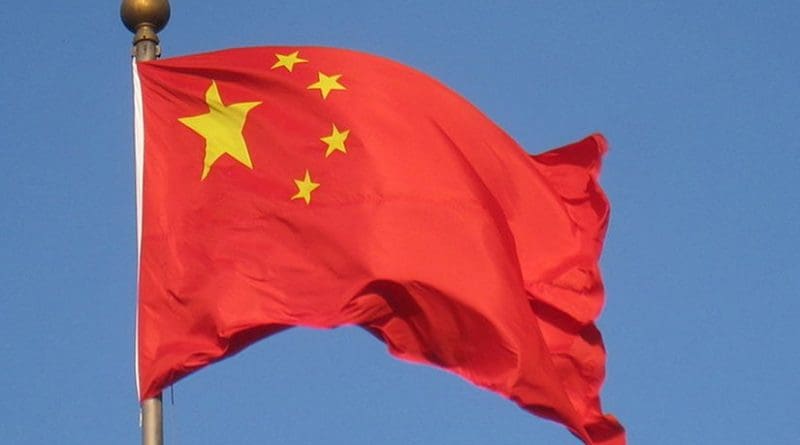China Gets Flying Boats: Regional Waters Just Got Murkier
By Cecil Victor*
These were the mainstay of colonial empires east of Suez for many decades. With China announcing its “largest flying boat in the world” and India placing orders for 18 from Japan, the strategic environment in the Asia-Pacific oceanic region is about to become murkier than ever.
Also known as ‘amphibians’ for being able to take off and land on water as well as operate from terrestrial bases, these platforms lend themselves to a multitude of operations. From search and rescue to firefighting on land, anti-piracy operations, logistics support and surveillance and reconnaissance they will be useful in what the Chinese say (almost in an aside) for ‘strategic purposes’ in the disputed South China Sea.
Thus, given the massive investment in the overland economic corridor with Pakistan, it should be expected that the Chinese flying boat AV-600 can be deployed at the Gwadar-Pasni naval facilities on the Makran coast of Balochistan in Pakistan. From there with support facilities in Djibouti in the Horn of Africa and Seychelles off the East African coastline the Chinese will be able to use the 5,500-km range of the aircraft for surveillance and reconnaissance in support of its maritime Silk Route and ‘one-road, one belt’ proposition in the Indian Ocean region.
It will be able to deploy up to 50 passengers (or marine commandos) at a speed of 570 kmph anywhere along the western coast of peninsular India within about two hours. Mischief in the Sir Creek disputed area in Gujarat in the North Arabian Sea can happen in minutes given its proximity to Karachi and Pasni.
The Chinese AV-600 has a maximum takeoff capacity of 53,500 kg while the Indian flying boat (the Japanese ShinMaywa U-2) has a payload of 43,000 kg for a take-off from water. Overall, the Chinese will be able to deploy two-and-a half times more personnel than the Indian Navy. This is in keeping with the Chinese military philosophy of ensuring more boots on the ground than any likely adversary (in spite of a drawdown of about three hundred thousand military personnel in recent times).
Intriguing is the single capability (search and rescue) attributed to the Japanese flying boat that India has acquired. This could be a product of Japanese post-war constraints preventing it from selling military equipment. But Japanese Prime Minister Shinzo Abe has recently taken steps to break out of a “self-defence force only“ injunction to deal with the evolving geostrategic environment in the Pacific Ocean caused by Chinese military assertiveness.
India has long ago broken the mould of “single capability” military platforms to upgrade its flying machines to “multi-role” capability. Its search for a “MMRCA” (medium multi-role combat aircraft) to replace the MiG-21 and MiG-27 says it all.
Similarly, India’s flying boat needs to be fitted out for multi-role operations. Search and Rescue is very important given the abject failure to swiftly search out the debris of a Coast Guard aircraft and, more recently the Indian Air Force An-32 that took off from Tamil Nadu for the Andamans.
Given that Chinese nuclear submarines have made it a habit to creep into Sri Lankan waters, India needs a better platform for submarine detection in the Indian Ocean region. The ‘low and slow’ capability of a flying boat can be put to good use in anti-submarine operations especially because it is capable of sitting in the water and using a “dunking sonar” (that which can be dipped into the sea to various levels) to scan the spaces within thermal layers which airdropped (as from the sonobouys dropped from the Poseidon maritime patrol aircraft acquired from the US) sensors cannot penetrate. This is because the sonar ‘ping’ is deflected (and not reflected) by the thermal layer giving the wrong impression that there is no submarine in the sea. It was with the skilful use of such thermal layers that a Chinese submarine captain was able to hide his boat and emerge within the defensive cordon of a US aircraft carrier in the South China Sea some years ago.
As is obvious this anti-submarine capability is a critical requirement in an Indian flying boat.
The small passenger capacity of 20 personnel or 12 stretchers need not be a handicap vis-a-vis the Chinese. Twenty marine commandos with their special skills and equipment is large enough to do extensive damage to an enemy.
It is in the intrinsic surveillance and reconnaissance role that flying boats can better serve Indian national interests during patrols in and around the outlying Andaman and Nicobar Islands that guard the Malacca Strait route and the south of Indonesia approach to the Indian Ocean. Detection and tracking of both submerged platforms and flying machines at this distance from the Indian mainland will give adequate advance warning to enable suitable counter-measures.
Given the expanse of the Indian Ocean region India needs more than the 18 flying boats it has ordered from Japan. A more optimum use of this fleet can be achieved by the introduction of an airborne refuelling facility. This will not only increase the range of each flying boat but also nearly double the ‘time on station’ which makes for better intelligence gathering and consequently better preparedness.
*Cecil Victor is an Indian defence analyst. Send your comments/feedback to: southasiamonitor.org

